|
Tracing
the
Manitoba Section of the Route
Crystal
City
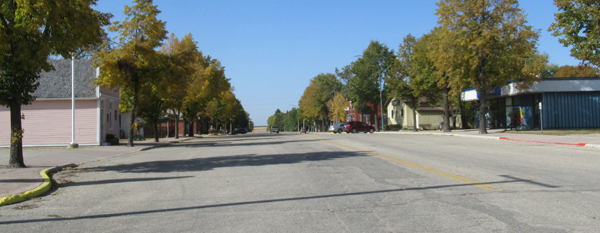
Crystal City was established by Thomas
Greenway who later became the
Premier of Manitoba in 1888. He is generally credited with the
expansion of railway lines throughout south western Manitoba.
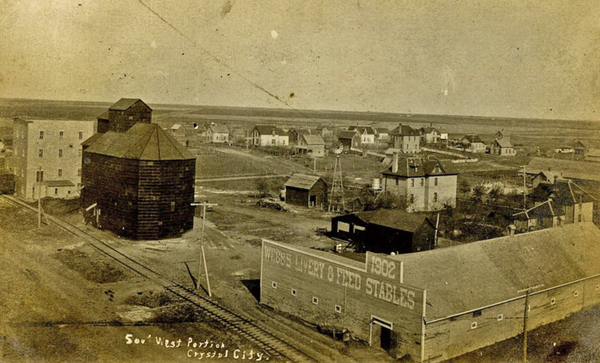
The town
has many attractions including the Crystal City Printing Museum. The
Museum is housed in the original print shop built around 1880 and home
to the Rock Lake Herald, which later became the Crystal City Courier.
It features a fully operational press.
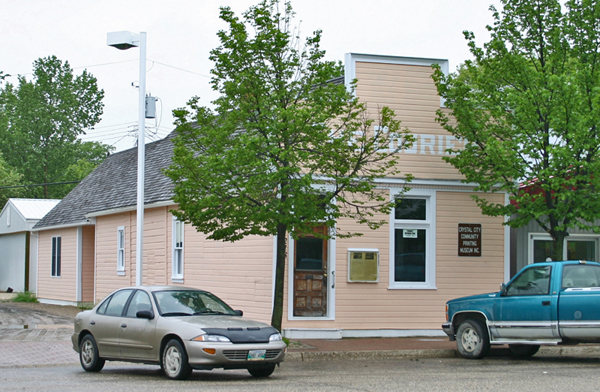
The route from Crystal City to the
former Avery Resort at Rock
Lake and passes close by Clearwater.

It is a small attractive village in a
pleasing valley setting. Like so
many towns these days, its importance as a service / commercial centre
has declined, but its community spirit and initiative continue to
thrive. It is home to the annual Harvest Moon Festival. History
displays and an attractive mural are prominent. The only railway
water tower on an original site is nearby.
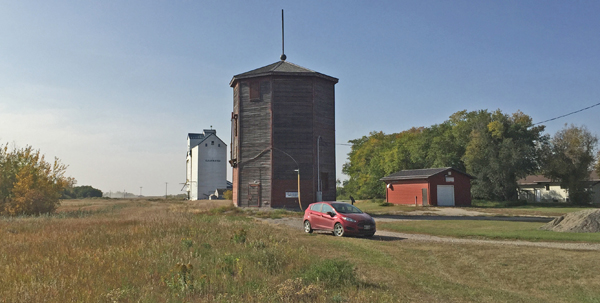
The former railway bridge is
a scenic walkway.
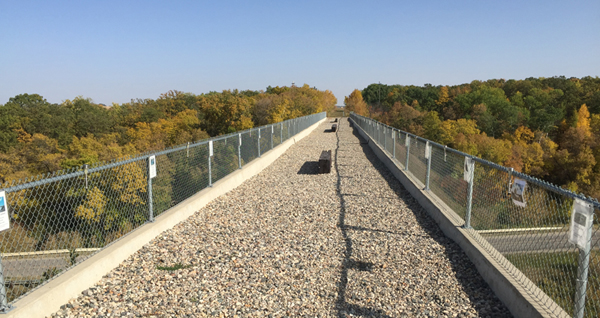
It is a great example of what a small
village can be.
From the Clearwater corner the road
twists and turns it way to the
former site of Avery’s Resort on the north east tip of Rock Lake. II’s
a quiet road today as paved alternatives are available. But it is a
pleasant drive, now, as it was then.
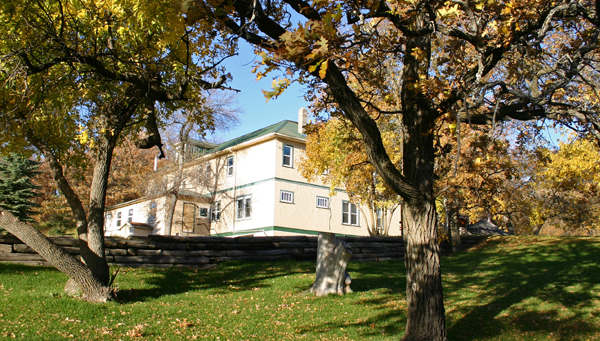
The pioneers were quick to recognize the
beauty of the place and to see
its potential as a tourist attraction.
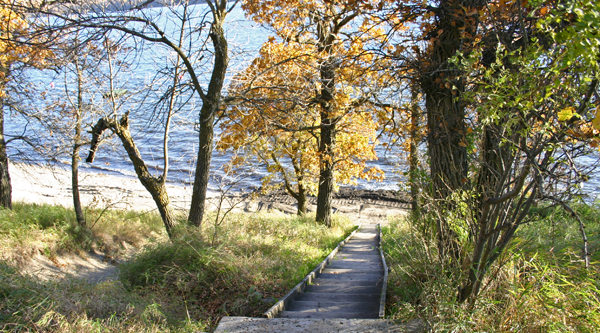
For many Sunshine Highway
travellers it would be a scenic highlight of the trip.
From the turn off near Rock Lake it is a
short hop to Glenora.
Glenora

Glenora never was a very big village,
and that hasn’t changed much
since this 1949 aerial photo was taken.
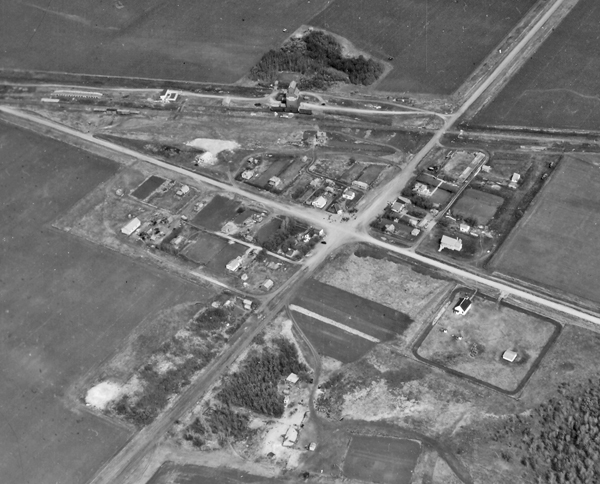
It may not have much of a business
district, but you can get nearly
everything from whiskey to motor oil at the Glenora Mall. A noted
historical attraction is the United Church, built in 1889 in the nearby
Marringhurst and moved here in 1926. It is lovingly maintained and a
display on the attractive grounds included a the millstone from the
Glenora Flour Mill, one of the first in the region.
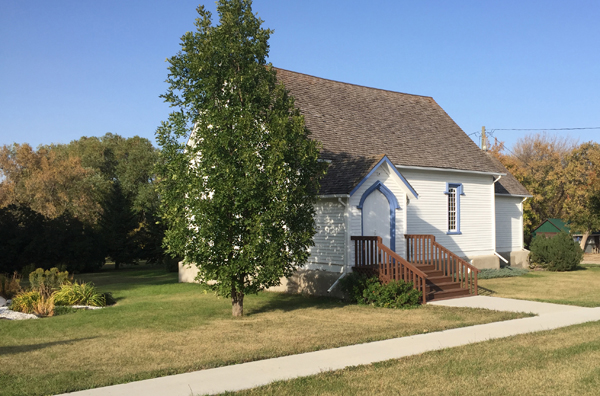
The route from Glenora to Baldur is
still a well used road, west
to the to the “9 Mile Corner” and straight north to Baldur
Baldur
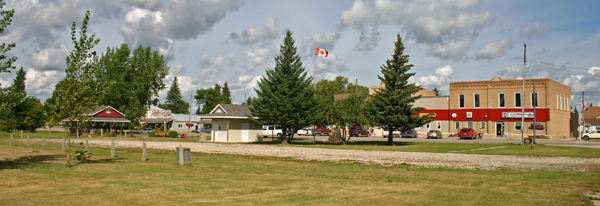
Baldur was a thriving town in 1920, and
today it remains a service
centre for the immediate area. A K-12 School, Hotel, General Store, and
other businesses are available. The Argyle Historical Museum is on
Elizabeth Avenue, (the main drag) and the former CN Station grounds are
now home to now an attractive park with a carefully maintained
all-season washroom.

A few of the buildings seen in thei 1905
photo still stand today.
Baldur was a Norse God, and the name
reflects its close ties to the
Grund district to the north of town.
Before Highway 5 (Then 258) was upgraded
and paved, the path from
Baldur to Glenboro twisted northwards through scenic hilly country,
dotted with small lakes.
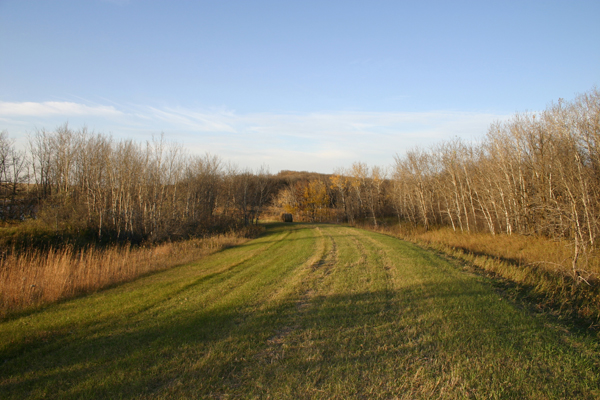
This was once part of th Sunshine
Highway, curving around a slough. The
road was later straightened leaving this remenant maintained by the
landowner.
The region was home to Grund, the
largest
Manitoba Icelandic community outside of the Interlake. That
legacy is kept alive by descendants of those first settlers by way of
Frelsis Lutheran Church.
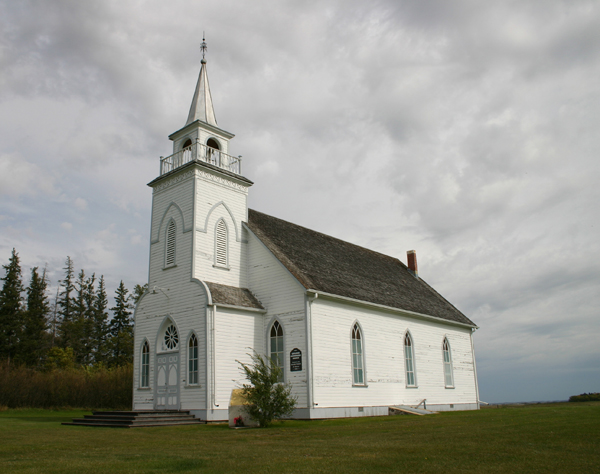
By 1920 the well established route was a
natural choice as part of the Sunshine Highway. A bit south of Frelsis
Church the road passes through a slough. It used to bypass that body of
water and parts of the original trail still exist.
Glenboro

Glenboro was also a thriving town
when the idea of the Sunshine
Highway was presented and they readily signed on. It remains a busy
place today.
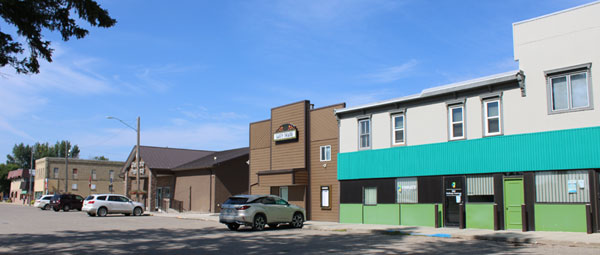
There are
good places to eat (or
just have ice cream) and
a great bakery. Check The Burrough of the Gleann Museum and Sarah the
Camel.
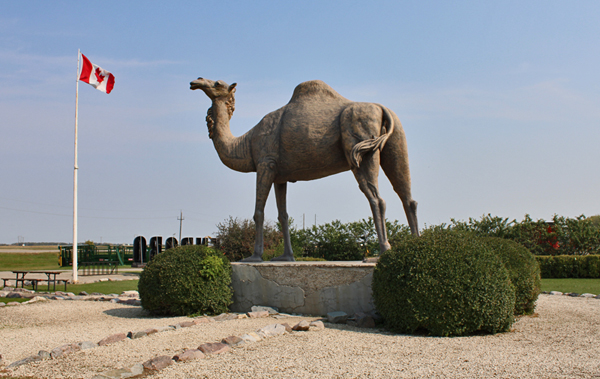
If you have time for a side trip,
Spruce Woods Provincial Park
close by and well worth the detour.
Ashdown.
Early plans for the Sunshine Highway
list Ashdown as a stop. Today it
takes a careful look at old maps to locate Ashdown, it was never more
than a station and two elevators. When railway’s were established in
farming country the goal was to have an elevator every 8-12 kilometres
to provide reasonable access to farmers who, at the time were using
horse drawn wagons to deliver grain, and to haul supplies back to the
farm.
Cars and trucks changed all that, and by
1920 some locations grew
as towns while others were just not necessary. Ashdown was on the
map, as railway locations generally were. It had two grain
elevators for a time, but and never did have a store. With
Wawanesa nearby, it wasn’t needed as a commercial centre.
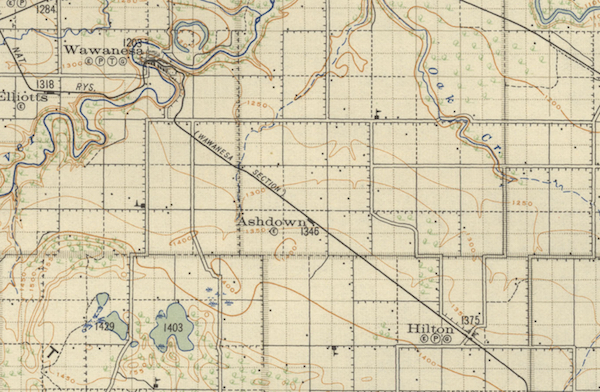
One can
still locate the rail bed
where it passed through Ashdown but
that’s about all there is to see.
Except in its very early inception the
highway probably passed north of
Ashdown along what is now Highway #2. For a few miles it may well have
been a mile north along the road to Northfield School. The original
school was rebuilt but this is the same schoolyard Nellie (Mooney)
McClung walked to every morning. You can see it, one mile to the
north as you approach the Hiway 18 intersection.
Here it is worth noting that as early as
1921 an account of a trip in
the Brandon Sun (July 25) only mentions stops at Crystal City, Baldur,
Glenboro, Rock Lake, Glenboro and Wawanesa. A few other accounts in
that era mention Rounthwaite.
Wawanesa
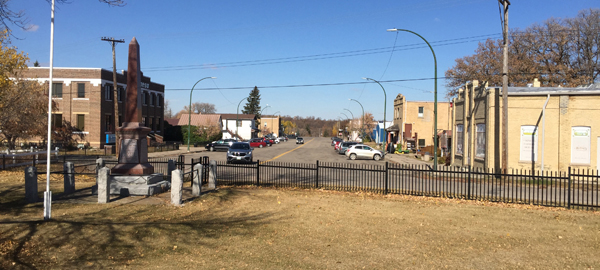
The next stop is Wawanesa, birthplace of
the Wawanesa Insurance
Company. The history of the village is well represented in the
Sipeweski Museum, housed in the original head office building of the
Company.
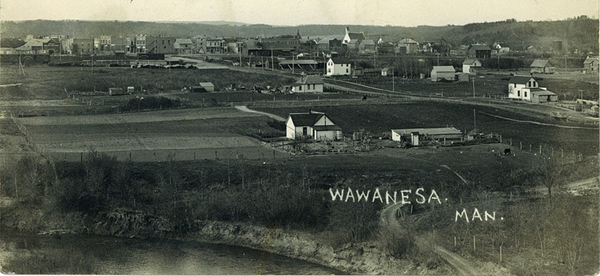
There is lots to see in Wawanesa. The
spectacular riverside
location is certainly one of the attractions. Be sure to drive along
Cliff Avenue and stop at the overlook.
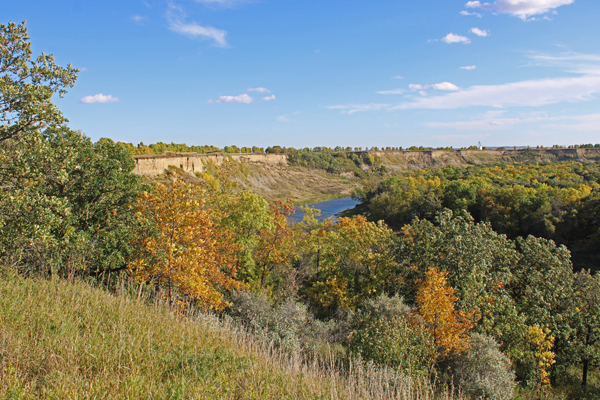
Methven
Moving southward you come to the former
village of Methven, established
with the arrival of the long-promised CPR branch line that ran from
Glenboro to Souris.
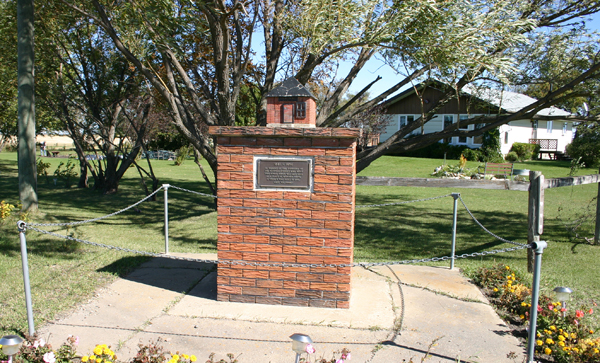
Methven is mentioned as a location on
the route in the very early
accounts. The road did pass right through it, but by 1920 to was
apparent that nearby Wawanesa was the more appropriate place to stop.
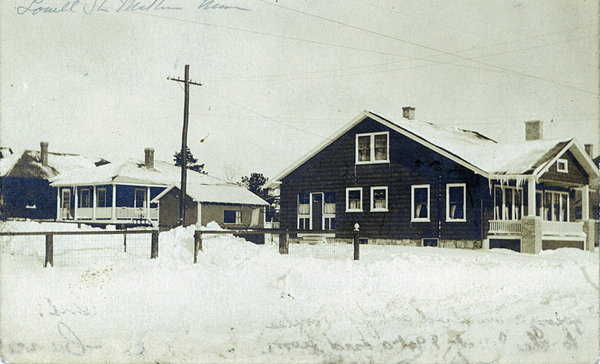
Methven was just too close to develop
many businesses, but places like
Methven were still important, as communities. Having elevators and
train stations nearby was always important to farmer families, who in
those days made up the bulk of the population.
Rounthwaite
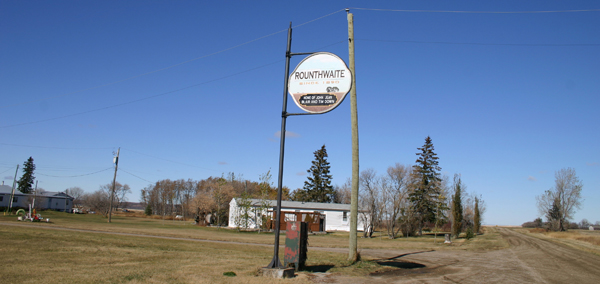
In 1889 the Northern Pacific and
Manitoba Railway built a line from
Morris to Brandon. This resulted in big changes to the map of the
region. The railway decided where to build stations and that’s where
the towns would be. At the time, on what would later become the the
Sunshine Highway Route, there were only two examples of
settlements that were towns. Glenora, was close to Rock Lake, a bit to
the southwest of where the namesake railway village would later be
located, had a store, flour mill and sawmill was developing into
a commercial centre. Souris City was in the big loop of the Souris
Rover that you can see south of Highway 2 as you cross it near
Wawanesa. It had services and appeared to be in a position to grow into
a busy place.
In some cases towns appeared where most
previous entries on the maps
denoted Post Offices. Greenway appeared in the vicinity of the Dry
River region. Baldur replaced the Post Office community of
Otenaw. The small but important village of Souris City was replaced by
Wawanesa.
In 1884 the Rounthwaite community
was well established although
it only consisted consisted of a Church, and a Post Office. When the
rails arrived in 1890 it passed a about 3 kilometres to the east of the
Church. The Rounthwaite name was applied to the new site. The same
thing happed with Glenora and Crystal City.
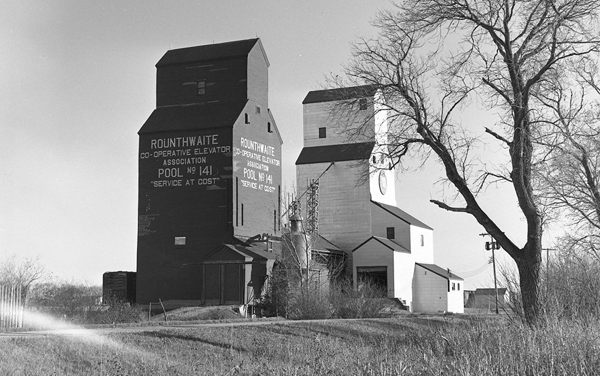
Rounthwaite had by 1920 become a busy
little village. It is quiet now,
but still standing as they say. Note that the approach to the village
has changed since the 1920's when this map was published.
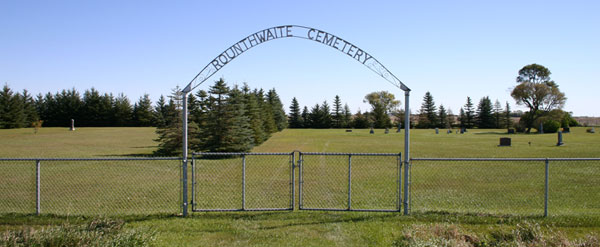
After passing through the village, one
might take a slight detour to
visit Rounthwaite Cemetery, the original site of St. John’s Anglican
Church built alongside the cemetery in 1884, later moved to the
village. It now sits alongside the Sipiweske Museum in Wawanesa.
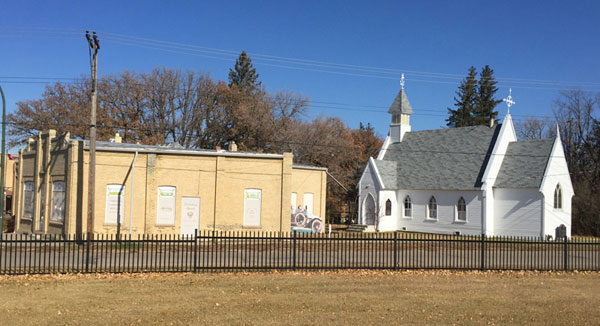
Check
it out. It’s oldest standing Anglican Church west of Portage La Prairie.
Brandon Hills
As you proceed from Rounthwaite, the
road follows the grid road pattern
west, then north, you then pass along the east flank of the Brandon
Hills.
The route offers excellent views of those substantial remnants of the
last Ice Age.
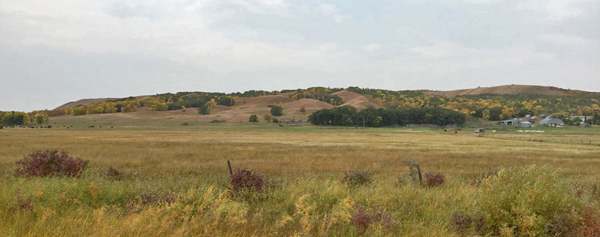
If you check an old map you will find
Martinville, another stop on the
Morris - Brandon line. One might have expected the Sunshine
Highway to proceed a bit to the east to included Martinville, but
although the elevator at Martinville was important to farmers in the
area, no other service were available.
Instead, you pass closer to the hills
and through the Brandon Hills
district, one of the first settler communities in the region. A Church,
a Cemetery and School, were the heart of this settlement that never
became a town, The second post office created south of the Assiniboine
was located nearby.
Brandon
After zigging and zagging around the
northwest corner of the Brandon
Hills the route follows Road # 108 West which soon becomes 17th
Street East, and the entrance to Brandon.
At least one old map shows a road
angling NW 17th Street East to the
corner of 1St and Richmond.
An article from Nov. 20, 1920 in the
Brandon Sun notes that the new
Sunshine Highway route began at City Hall and the Prince Edward Hotel,
(9th and Princess Avenue) proceeded south on 9th Street to Victoria
Avenue, east to First Street, then 1 mile south to what was then the
city limits.
Interestingly enough, that was also the
terminus of the Northern
Pacific and Manitoba Railway which conveniently ran right up to the
Prince Eddy.


|